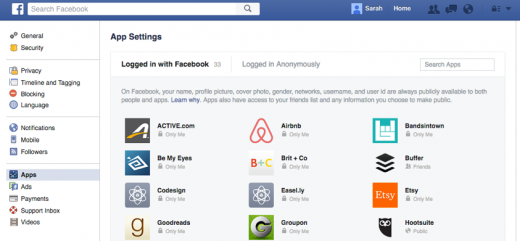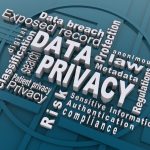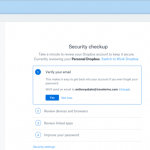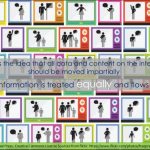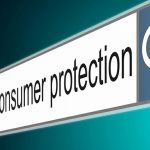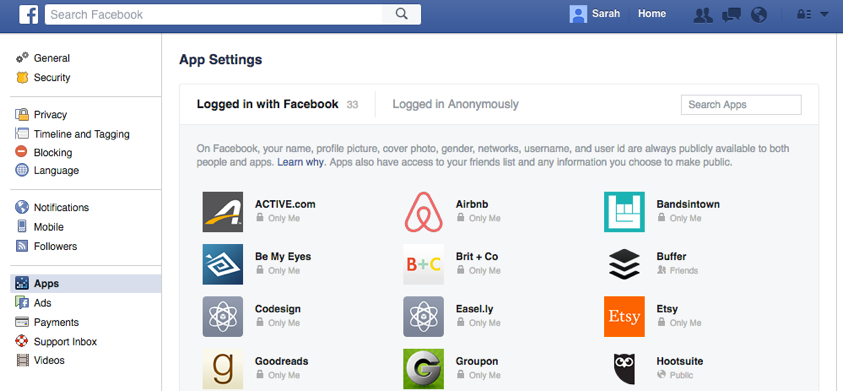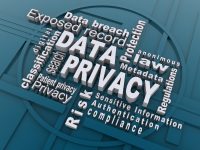How to Adjust Your Facebook Privacy Settings
May 6, 2016

Facebook has a rather extensive selection of privacy settings, many of which are scattered throughout your account settings. Here are some chief privacy concerns Facebook users should address to keep their profile private.
Our tutorial includes direct links to some account settings — you must be already logged into Facebook to be correctly directed.
General Walkthrough: How can I control my privacy on Facebook?
Visit the Facebook Settings Page
Go to the General Settings tab by clicking on the padlock icon on the top right corner of any Facebook page and select “See More Settings” or visit www.facebook.com/settings.
General Tab
General account settings include basic account information, like your email address and password, as well as publicly viewable data like your name and networks.
 Name: Instead of your full name, use an abbreviation or nickname if possible.
Name: Instead of your full name, use an abbreviation or nickname if possible.
Email: Use a dedicated email address for your Facebook account. This reduces your points of exposure if your Facebook or email address were hacked.
Password: Create a strong, unique password that contains upper and lowercase letters, numbers and symbols. Change your password frequently.
Networks: Remove networks, such as your school and place of work. They may seem harmless, but think about how many security questions ask for your high school mascot. Do you really want that information available to the public?
Security Tab
The security tab, located on the left column of the settings page, is your first line of defense in terms of controlling account access and preventing hacking.

Login Alerts: Get an email alert if anyone logs into your account from a new device or browser — this will help prevent account takeover.
Login Approvals: Turn this on to implement two-factor authentication. You will receive a passcode on your phone when you login, which you will need in addition to your password.
App Passwords: Don’t let apps save your Facebook password — if that third-party app experiences a data breach your Facebook account could be compromised.
Your Browsers and Apps: Review registered devices and remove any unfamiliar browsers or apps immediately.
Where You’re Logged In: Review where you are currently logged into Facebook from and remove any unfamiliar or old locations immediately.
Privacy Tab
The privacy tab, located on the left column of the settings page, adjusts your default sharing, search and contact settings.

Who can see my stuff?
Future Posts: Friends
Activity Log: Review all your actions and adjust visibility as needed.
Limit Past Posts: Set old posts to a friends-only visibility.
Who can send me friend requests?
Choose “Everyone” or “Friends of Friends.” You must approve all friend requests before they are allowed to view your full profile.
Who can look me up?
Using your email: Friends
Using your phone number: Friends
Do not allow search engines to link to your Facebook account.
Timeline and Tagging Tab
The Timeline and Tagging tab, located on the left column of the settings page, gives you control over what appears on your Facebook Timeline.

Who can add to my timeline: Turn on “Review posts friends tag you in before they appear on your timeline?” to give you control over what you are tagged in.
Who can see my timeline: Only allow friends to see what you or your friends (if you allow them to) post on your Timeline. Use the View As mode to see how others view your profile.
Tag review: Turn on tag review to ensure your tags are accurate and to thwart spammers who may use your posts to tag others and get attention, typically for spam or business lead generation.
Tag suggestions: Turn off tag suggestions to prohibit Facebook from recommending you be tagging in unknown content.
Blocking Tab
Restrict users and apps from preforming certain actions with Blocking settings.

Restricted list: Use the ‘Restricted List’ if you have people on your friends list that you only want to share public items with.
Block users: Prevent users from contacting you or seeing your private or public profile. Blocking is mutual and anonymous. Blocked users are not notified and you cannot view each other’s profiles. Block a user on this settings page or by clicking on “…”in the lower right corner of their cover photo and selecting “block.”

Block apps: Prohibit app/game invites from your friends.
Block pages: Similar to blocking users, you may block a Page so that entity can no longer interact with your posts.
Apps Tab
Apps are third-party services that you link to your account. They may be used to enhance your experience or as a login method for an outside website. Because apps are outside of Facebook’s domain, they pose some serious security risk.

Using this tab, you may review what information you agree to share with each app, such as your email address or friend list, and who can see the apps you use. Click on each app to adjust your preferences.

Visibility: Adjust to “Only Me” to avoid inadvertently sharing in-app activities with your friend group.
Data sharing: This is the list of information you provide the app via Facebook. Delete the app if information sharing seems overly intrusive.
Apps, Websites and Plugins: Using this setting you may disable app notifications and game invites sent by your friends. This will not affect your ability to use apps.
Apps Others Use: Some apps request a user share their friends’ information. So an app may be gathering information on you without your knowledge. Uncheck all of these boxes to keep tabs on where your information is being shared.
Old Versions of Facebook for Mobile: Set to “Only me.”

Visit Edit Profile Section
Your edit profile tab can be found on the homepage. This information is shown in the About Me section of your profile.

Your About Me section holds a lot of personal information — including your education, hometown and job. Many of these can give hackers clues for common security questions, like your hometown or high school mascot. Set the audience for all information in this section to “Friends.”
Work and education: Set to friends only.
Places you’ve lived: Set to friends only.
Contact and basic info: Birth date can be set to friends only; all others should be omitted or set to only me
Friends and relationships: Leave empty since these relationships can reveal a lot of personal information — such as your mother’s maiden name.
Details about you: Set to friends only.
Life events: Review life events using this tab. Click on a particular event to adjust privacy. Use the down arrow symbol to bring up the edit section and change the audience in the lower right corner.
Review Your Settings
Once you’re done — visit your Facebook page to review how your settings appear.

View how your profile appears to others. Go to your profile, click on “…” on the lower right side of your cover photo and choose “View As.”
Still not feeling secure? Consider deactivating or even deleting your Facebook account.
Digital & Social Articles on Business 2 Community
(71)

